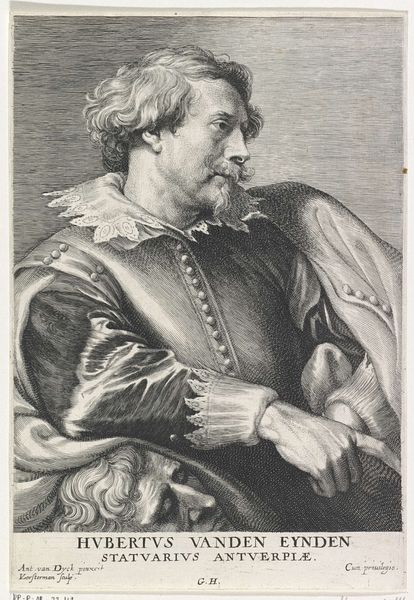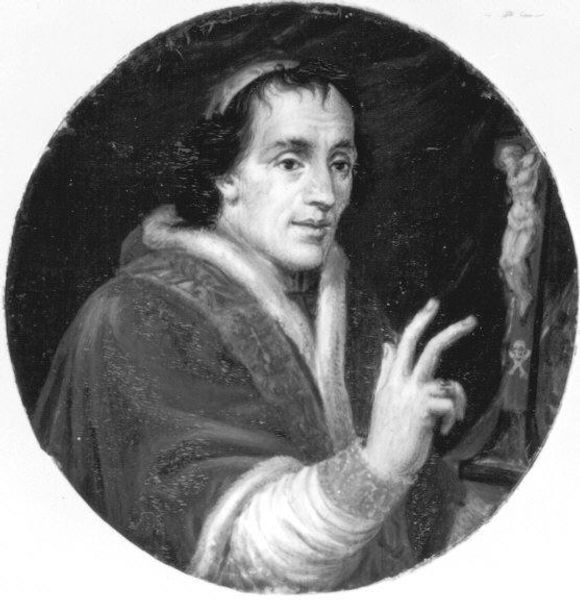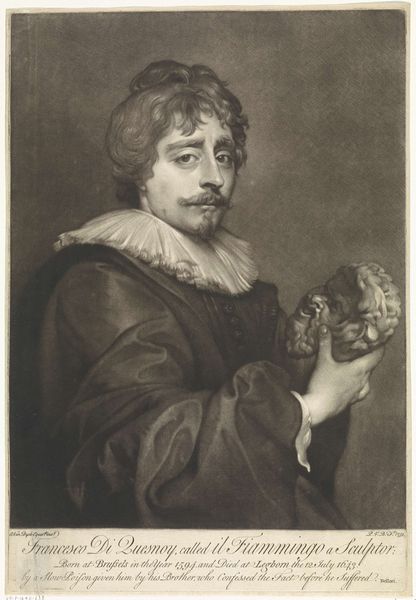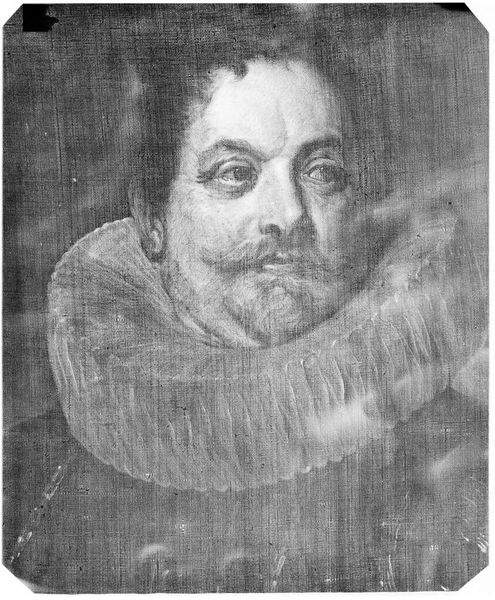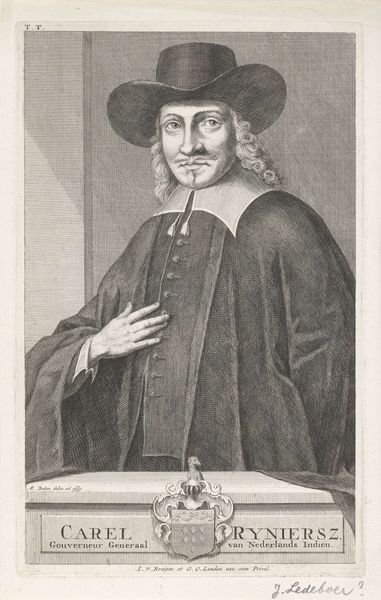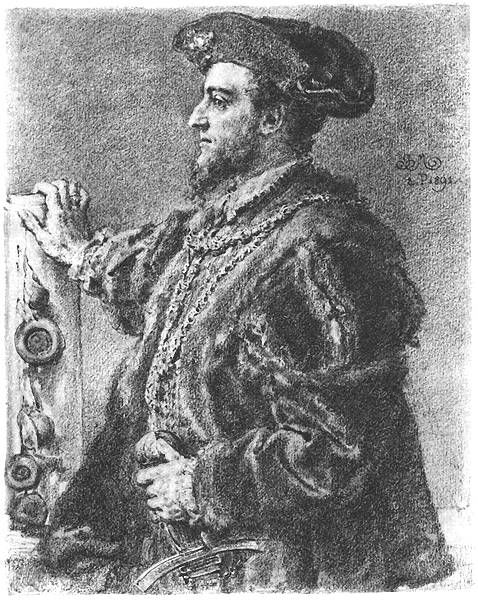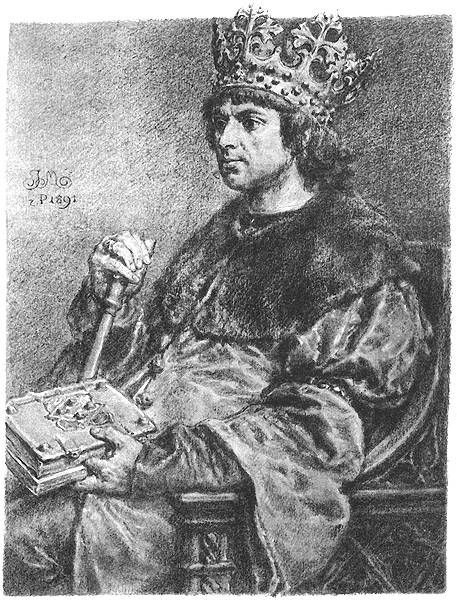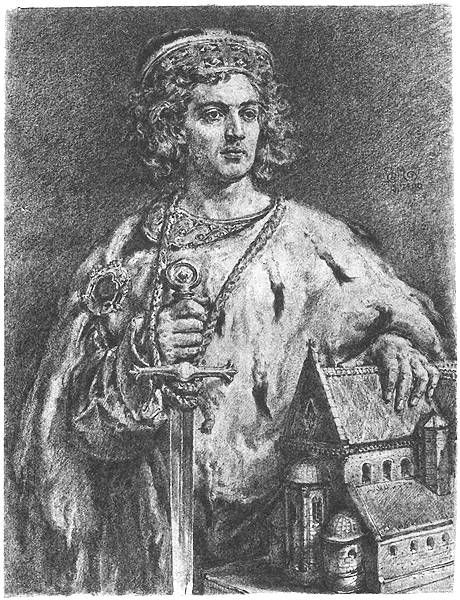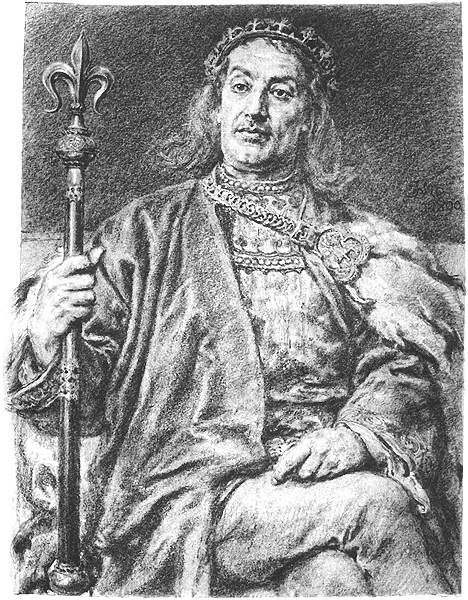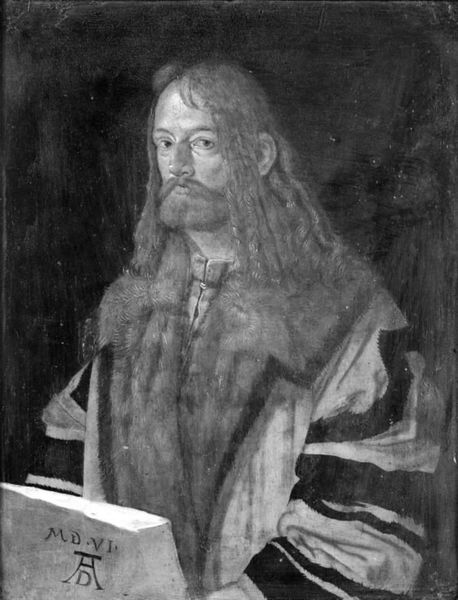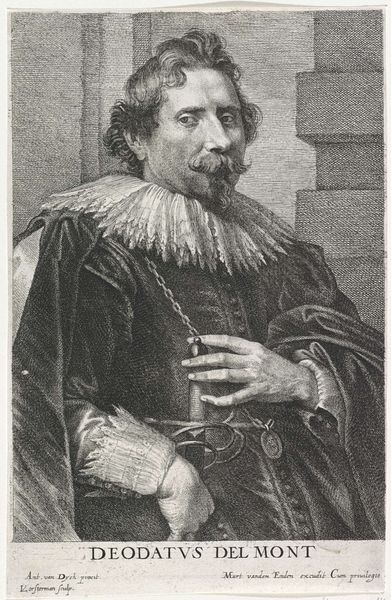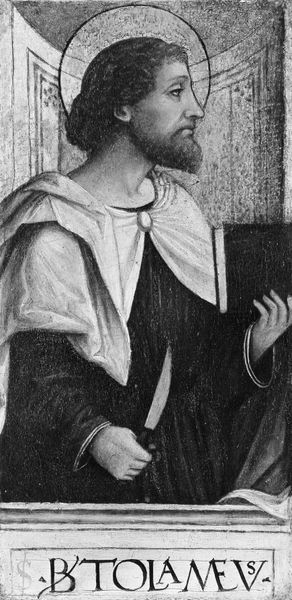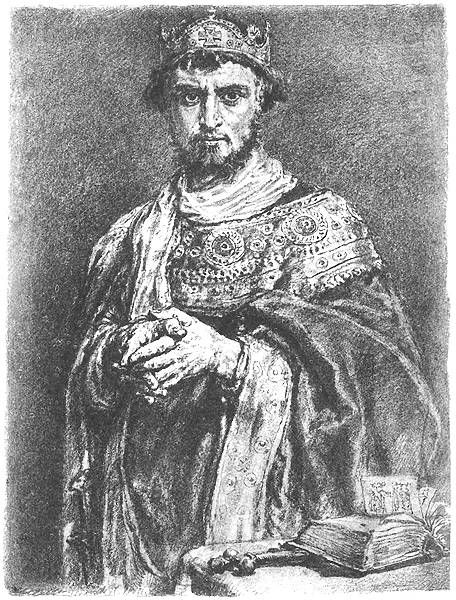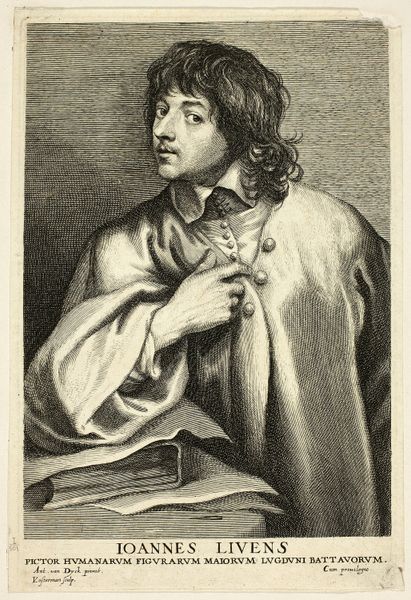
Allegory of Taste (Portrait of the Painter Jan Davidsz. de Heem, after a self-portrait) 1615 - 1675
0:00
0:00
drawing, print
#
portrait
#
drawing
#
baroque
# print
Dimensions: sheet: 10 1/2 x 7 11/16 in. (26.7 x 19.6 cm)
Copyright: Public Domain
Curator: Here we have Lucas Vorsterman I’s print, “Allegory of Taste (Portrait of the Painter Jan Davidsz. de Heem, after a self-portrait)," created sometime between 1615 and 1675. The piece is currently housed at the Metropolitan Museum of Art. Editor: My first impression is one of controlled exuberance. The subject, presumably Jan Davidsz. de Heem himself, has a casual elegance. But there's also an undeniable seriousness in his gaze. The texture captured in the engraving is marvelous, isn’t it? Curator: Absolutely. Vorsterman, known for his skill as a printmaker, has rendered De Heem's textures, from the feathery plumes in his hat to the sheen on his cloak. Notice the contrast between the detailed clothing and the less defined background, which directs the viewer's eye. It also makes the means of image-making explicit, as it were. Editor: And those plums – aren’t they symbolic of abundance and worldly pleasures? Combined with the glass of wine, and he's presenting himself as a master of worldly delights, someone whose art stems from this very engagement. There is a statement being made about pleasure. Curator: The "Allegory of Taste" is so compelling because it ties the artistic practice directly to the experience of sensory pleasures. De Heem’s still-life paintings often depict such luscious displays of food and drink; here, that sensibility informs his self-portrait, a literal and figurative "taste" of the artist's life and craft. Editor: The inscription beneath further supports this interpretation, alluding to the joys of Bacchus and contrasting them with the dangers of intemperance. This image becomes more than just a portrait, it’s an emblem of controlled indulgence. Curator: And there’s a deliberate visual language at work, linking art-making and worldly experience. Editor: I'm now considering how the print, as a mass-produced item, disseminates that image, turning it into a kind of brand. Curator: I concur, that idea makes the portrait almost a declaration, broadcast through Vorsterman's skill with engraving. A potent connection of taste, both artistic and sensory. Editor: It makes me rethink what portraiture means. The man with a feather, glass, and artist tools invites consideration, encouraging engagement. Curator: Indeed, looking at Vorsterman’s technique alongside De Heem’s implied tastes is enlightening, thank you for that insight!
Comments
No comments
Be the first to comment and join the conversation on the ultimate creative platform.
